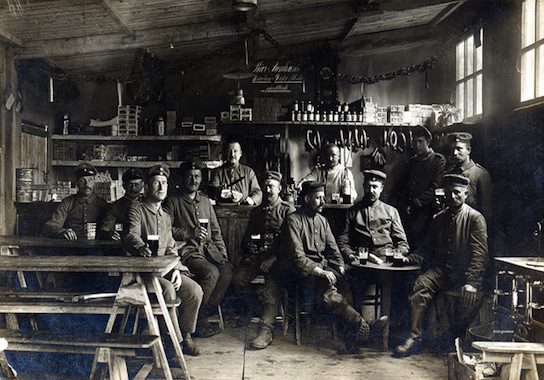A Vintage Coping: How Wine Fosters Hope in War

When reading about war zones, it is easy to envision an endless battlefield, with uninterrupted explosions and turmoil. But Atlantic writer Cathy Huyghe pointed out Friday that, even in the midst of Syria’s turmoil, life goes on for many. Her story on Syrian winemakers highlighted the way people hold to hope in the midst of fear and death.
Karim Saadé and his family own a vineyard near Latakia, Syria, located on the outskirts of the Al-Ansariyah mountains in northwestern Syria. Because it is outside the towns experiencing heavy fighting, it has been safe from attack thus far. The Saadé family has had difficulty keeping workers, especially as the local currency has collapsed and taken an inflationary toll on wages. Despite these difficulties, Huyghe writes that the winemakers are “planting the seeds, literally, for the future: Derenoncourt pointed out that they’ve just bought fresh rootstock for new vines.” Her story suggests a deep sense of rootedness and loyalty to the land:
Fabrice Guiberteau, a winemaker at Château Kefraya in the fertile Bekaa Valley of Lebanon, can see the border with Syria from his vineyards. Despite the worries of a conflict so close to home, leaving Lebanon would be difficult, he said. ”It’s about having started something and wanting to see it through,” said Guiberteau, who previously made wine in Cognac, France, and Morocco before coming to Lebanon. The Saadé family has recently made new investments in material for Château Bargylus in Syria, he noted. As Karim Saadé says, “Wine ties you to the land, and you cannot just pack up and leave. It’s a signal to yourself and to others.”
The story reminded me of Ernest Hemingway’s A Farewell to Arms. In the throes of World War I, American ambulance driver Lieutenant Henry learns to cope and survive. His deepest moments of fellowship, love, and communion usually surface around food and drink: especially wine and cognac. He risks his life on the battlefront just to procure cheese for his comrades’ pasta. The descriptions of wine – “clear red, tannic and lovely” – of eating spaghetti – “lifting the spaghetti on the fork until the loose strands hung clear then lowering it into the mouth, or else using a continuous lift and sucking into the mouth” – are nuanced and vivid. Hemingway breaks with his dry, concise style in order to make such scenes come alive. He shows the human lust to live, to enjoy all the beauties of appetite and existence, to endure in the midst of change. For these characters, the drink is indeed “a signal” of sorts.
New York Times contributors Michael Haft and Harrison Suarez identify a similar “signal” and community-building power in coffee amongst the American military. By World War II, they write, American servicemen consumed 32.5 pounds of coffee per capita, per year. Whether carefully brewed or burnt and bitter, coffee is a soldier’s “constant companion”:
As platoon commanders, we would often share with our platoon sergeants and squad leaders while we gathered around a map and discussed our plans for the day. Whether in the forests of North Carolina, the mountains of California, or the deserts of Afghanistan, the ritual provided a sense of continuity … Coffee was more than just a drink. It was a way to remember what it’s all about, a way to connect with old friends, a way to make sense of where our paths in life had taken us.
Lieutenant Henry and his soldiers fight, retreat, laugh, and philosophize around alcohol. It helps them cope; it comforts them in the midst of sorrow. Even for civilians like the Saadé family, it is their wine – their simple work and community it gives them – that helps them cope with fear of the ominous war. Their wine ties them to the land, and to each other.